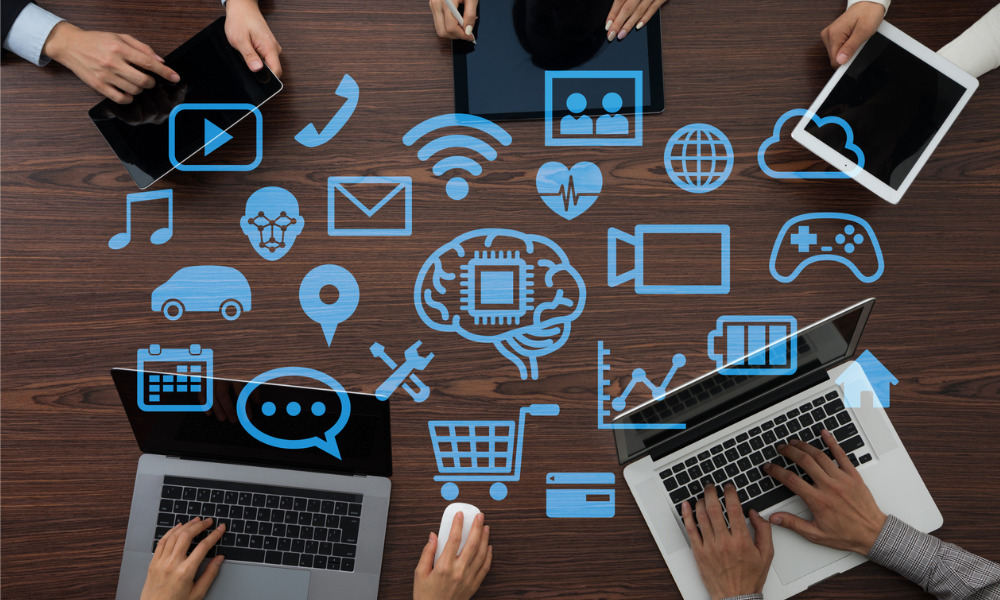
Standard Chartered’s workplace strategy leader shares his insights into the future of work

In the last decade, many forward-looking companies, mainly in the technology sector, have created iconic workplaces unlike others.
These innovative offices not only provide a competitive edge in the talent game but also offer a significantly improved experience to help their workforce excel. This paradigm is now shifting.
The more structured and centralised financial organisations, which have been relatively slower to embrace these changes, are now partaking in this rising trend.
Once seen as late to the game, these financial institutions now have the potential to leapfrog into the future of work. The keyword? A human-centric approach.
In the future, the success of workplace analytics will be determined by its ability to impact the humans running the business and employee productivity, rather than real estate or its footprint. After all, costs related to salaries and employee benefits make up 90% of total operating costs, while real estate costs account for less than 10%.
With the outbreak of COVID-19, organisations have had to send their workforce home. Globally, 70% of Standard Chartered’s employees are now working from home, while in Singapore the number is as high as 85%.
In the Asian city-state, remote working was already in high demand in pre-COVID times by the younger generation seeking improved work-life balance. This recent change of conditions may have just tipped the balance in their favour.
As demonstrated by the smooth continuity of operations and the positive sentiment from employees, most everyday tasks have proved performable away from the office. Close to 90% of Standard Chartered’s employees worldwide feel that they can support the needs of customers while working remotely.
READ MORE: Technology gap? Some business leaders are 'flying blind'
Workspace effectiveness analytics
While there may still be employees whose roles can only be effectively performed in their primary workplace, a larger portion of the corporate labour force is likely to be able to function remotely in the future with few to no issues.
Consequently, organisations will have to rethink how to use office space more efficiently. And the predictable answer will lie within the workplace analytics field.
Allocating the right amount of space for the different office functions and needs (e.g. workstations, meeting rooms) will require a new approach.
The knowledge accumulated in the previous two decades by workplace designers will be of little use since the behaviour and social norms related to the office work will have been completely changed, especially within the most advanced organisations. How much space will then be the right space?
The occupancy sensors and descriptive analytics that, so far, have been used to understand the patterns of occupancy, will now have to leap to more sophisticated and less complicated solutions, minimising operational disruption in their deployment and maintenance.
Besides all the operational issues caused by the existing clunky and expensive array of sensors and cables, the data collected has so far been limited to descriptive findings, failing to take the next steps into predictive and prescriptive analytics and missing the opportunity to truly influence the workspace design with more objective data.
Improving employees’ user experience and productivity requires a much more thoughtful approach.
READ MORE: COVID-19: How technology can save your workforce
Human-centric analytics
Beyond the traditional and rather clunky technology currently used in corporate real estate, knowledge workers now carry mobile devices that collect all sorts of data from their daily lives.
Eventually, these devices will achieve seamless connectivity through IoT technology, bridging personal devices with smart buildings and their own companies’ platforms.
Therefore, beyond simply measuring occupancy, a true human-centric approach of workplace analytics will monitor key aspects such as health, levels of stress, emotional states, and social behaviour.
Establishing patterns between these physiological factors and the office environment (i.e. noise levels, lighting and air quality, furniture settings, location) as well as their combined impact in productivity will elevate the conversations about workplace design, management practices, and employees' well-being.
Multiple studies have shown that productivity can be measured through methods such as keystrokes and mouse clicks. According to some studies, wearable devices, such as accelerometers, are also regarded as highly effective tools to measure employees’ stress levels, with an accuracy of as high as over 90%.
Combining data from these devices with e-calendar information could be used to explore correlation between physiological stress and employees’ work-related engagements.
Data collected directly from these sources, aiming to improve our work environment and management practices, will ultimately make it less vulnerable to the subjectivities and biases of questionnaires.
READ MORE: Manual processes costing employers billions per year
Transparency and data ownership
The main obstacle for workplace and people analytics has been employees' discomfort with perceived surveillance and privacy.
In general, the benefits of integrating this data and translating into enhanced workplace strategies may never be realised if employees continue to perceive a low value of providing the data and express high concerns with the use of these applications in the office.
As per the big changes brought about by COVID-19 in remote working, some similar changes could be realised in the way people will look at personal data privacy and surveillance, creating a window of opportunity.
To ensure the acceptance of these technologies in the office environment, employers will have to aim at higher transparency and clarity of objectives while allowing employees to control the data they share with the company.
While COVID-19 has challenged the workplace paradigm, the global pandemic may have also opened the way for a new era of workplace analytics in which employees are at the centre of the story.
The writer is Ricardo Chacon, workplace strategy manager, ASEAN, Standard Chartered Bank.